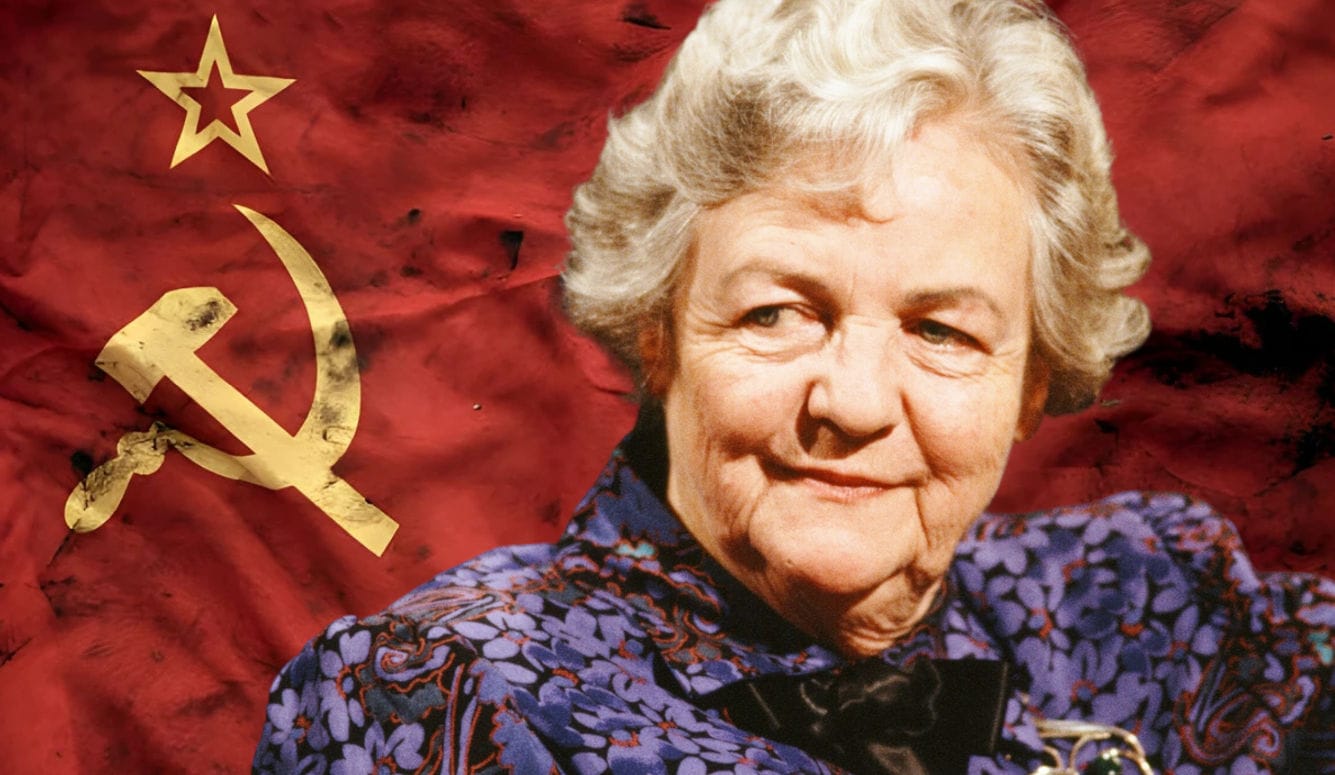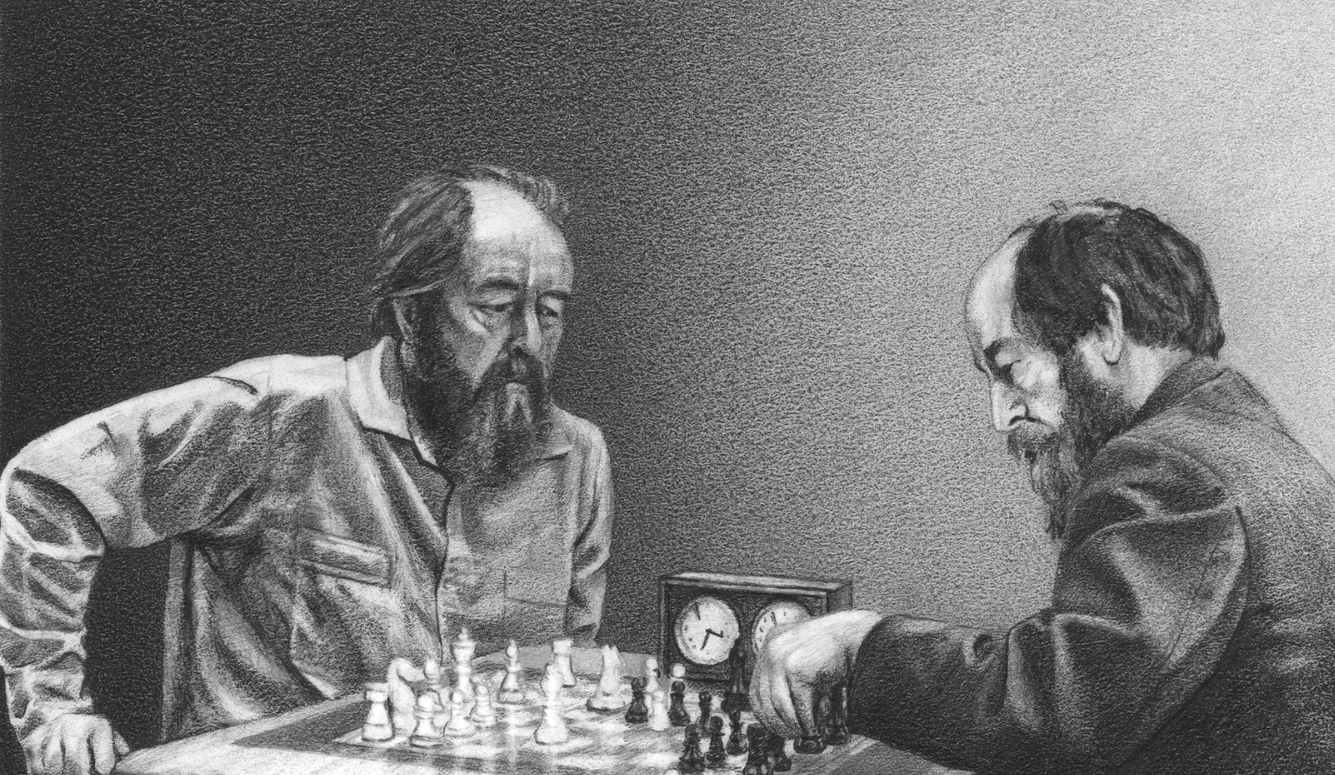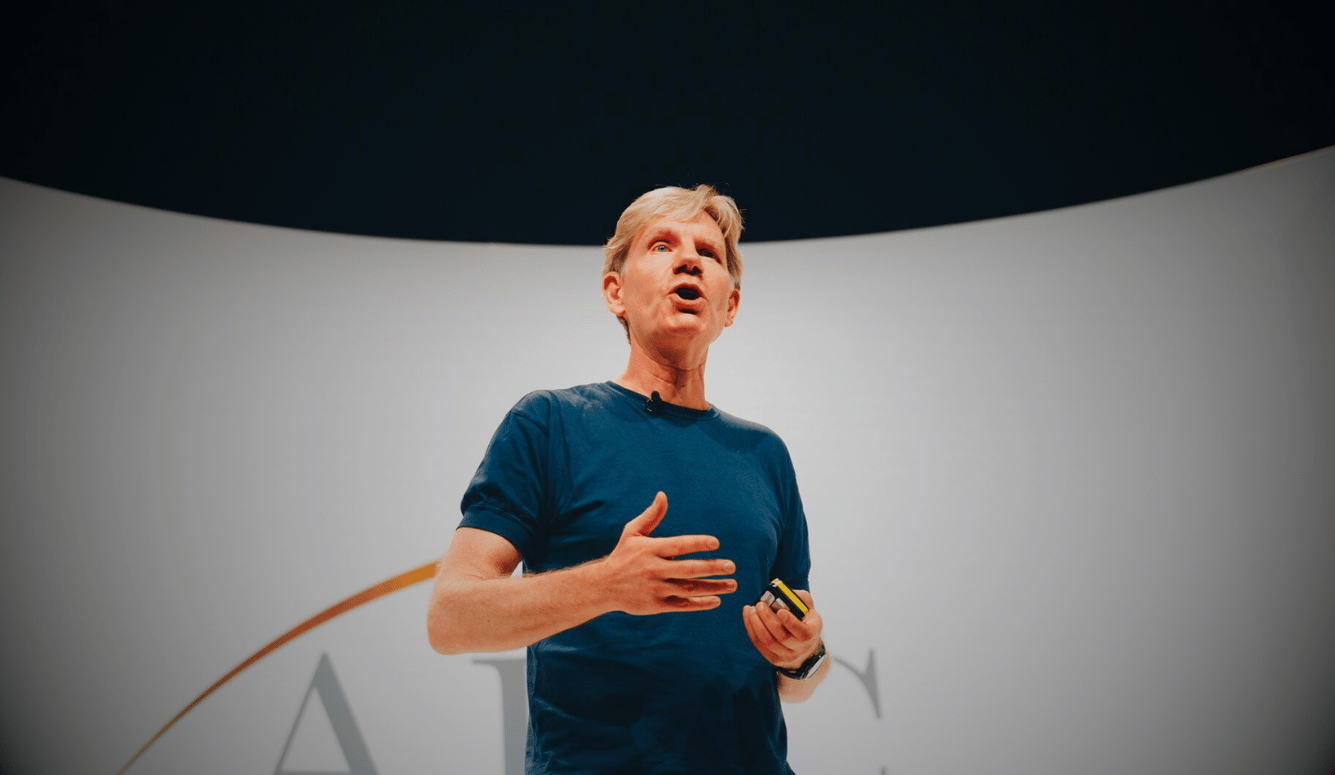
I.
Hollywood doesn’t make movies like The Man Who Would Be King anymore, and some people probably consider that a good thing. John Huston’s 1975 film, based on a short story by Rudyard Kipling, is a classic imperialist adventure. Two outcasts from the British army, Peachy (Michael Caine) and Danny (Sean Connery), set out from India, circa 1885, with two camels and twenty breach-loading rifles. Their destination: the remote region of Kafiristan, deep in Central Asia—a land not seen by any Westerner since Alexander the Great conquered it in 328 BC. Once there, they intend to use their modern weapons and military training to subdue the locals and rob the country six ways from Sunday.
At first, everything goes to plan. After a harrowing journey over the snow-capped Hindu Kush, they reach Kafiristan and begin uniting the country’s warring tribes. Fortune lends them a hand when an arrow, shot in battle, strikes Danny in his bandolier. The primitive Kafiris, seeing Danny fight on, surmise that he must be the son of the great Alexander, whom they worship as a god. The local priests concur, and Danny is crowned king of Kafiristan. Power, however, goes to Danny’s head. Rather than joining Peachy as he absconds with as much loot as he can carry, Danny decides to remain in Kafiristan and turn the country into a modern nation-state, with laws, bridges, and, one day, an heir to take his place on the throne. I won’t spoil the ending—not yet, at least—but suffice it to say that pride comes before the fall.
The Man Who Would Be King turns fifty this year, although, in a sense, it’s much older than that. The short story upon which it’s based was published in 1888, when Kipling was just 23, and Huston, the film’s director, spent more than two decades trying to bring it to the screen. Originally, it was supposed to be a vehicle for Humphrey Bogart and Clark Gable, but both stars died before he could secure funding. And yet, even after all these years, the film is still remarkably spry—not youthful, exactly (a few of the effects shots now look dated), but timeless in a way that only the best movies are. It pairs the style of a classic studio-era picture with the excitement of a New Hollywood thriller like Jaws (which was released the same year). It’s an action movie, a buddy comedy, a travelogue, and an historical epic all in one.
It’s also what a postcolonial scholar might call an “Orientalist” picture. The genre isn’t listed on Netflix, but it was once a Hollywood staple that included films like The Sheik (1921), Beau Geste (1939), Black Narcissus (1947), Lawrence of Arabia (1961), The Jewel of the Nile (1985), Aladdin (1992), and The Last Samurai (2003). Strictly speaking, any movie made in the West but set in the East is an Orientalist film, but the ones that get the most attention these days, drawing fire from critics and scholars alike, are action movies like The Charge of the Light Brigade (1936), Khartoum (1966), and Indiana Jones and the Temple of Doom (1984), in which a strong-jawed, fair-skinned hero thrashes scores of swarthy villains. Even before The Great Wall reached theatres in 2016, its creators were already being criticised for casting a white American actor (Matt Damon) in a movie set in Song-dynasty China. “We have to stop perpetuating the racist myth that only a white man can save the world,” the actress Constance Wu fumed on Twitter.
In retrospect, it’s incredible that the genre thrived as long as it did. Today, restaurants are boycotted for serving hummus and cries of “globalise the intifada” ring out from Ivy-League universities, but as recently as 2010, the executives at Disney thought it would be a good idea to cast Jake Gyllenhaal as a Persian prince. It wasn’t just attacks on social media that ended the Orientalist genre. In 2001, box-office revenues outside the United States totalled US$8.6 billion. By 2016, that figure had climbed to US$27.2 billion, with the largest amount of growth occurring in Asia. The median age in India is currently 28 years old. Approximately 65 percent of the population is under the age of 35—the prime moviegoing demographic. And though the country has a well-developed film industry of its own, it has nonetheless been generating a substantial amount of income for Hollywood lately. Avengers: End Game (2018) grossed over US$25 million in India on its opening weekend.
All of which means that a remake of The Man Who Would Be King is unlikely to be greenlit anytime soon. Early in the film, Peachy (Caine) glares at an Indian civil servant eating a melon in his train carriage. “Out the window, babu,” he sneers, before chucking the fellow off the moving train. Later, after he and Danny are installed in Alexander’s ancient palace, he shows a similar disdain for the Kafiris. “They’re savages here,” he says, “one and all!” The fact that the film is based on a short story by Rudyard Kipling, the so-called bard of the British Empire, only makes it more unattractive from a modern point of view. As far back as 1942, George Orwell was writing: “It is no use pretending that Kipling’s view of life, as a whole, can be accepted or even forgiven by any civilized person. Kipling is a jingo, he is morally insensitive and aesthetically disgusting.” The criticisms of Kipling are even less kind today.
II.
Kipling found the inspiration for his story in the exploits of several real-life adventurers who sought fame and fortune in the East: James Brooke, the White Rajah of Sarawak; Frederick Wilson, the Raja of Harsil; and, perhaps most important of all, the American mercenary Josiah Harlan. Like Peachy, Danny, and Kipling himself, Harlan was a Freemason. In 1827, after a stint in the British East India Company, he set out from Ludhiana, at the northwest corner of British India, with an army of a hundred men, hoping to overthrow the emir of Kabul, Dost Mohammad Khan. Though his army deserted en route, Harlan managed to make it into Kabul disguised as an itinerant holy man—he was the first American to set foot in the city. By ingratiating himself with various local bigwigs, including the very man he’d come to dethrone, Dost Mohammad, Harlan finagled a job, first as governor of the district of Gujrat and then as the commander of Dost Mohammad’s army.
Like Kipling’s two heroes, Harlan was consciously following in the footsteps of Alexander the Great, whom he idolised. In 1838, he led his army over the Hindu Kush to put down an uprising in Tartary. He brought 4,000 men, 2,000 horses, 400 camels, six artillery pieces, and, in emulation of Alexander, one bull elephant. Harlan’s retinue so impressed the people of Hazarajat, which he passed through along the way, that they made him their king and gave him an additional 2,000 soldiers for his campaign. After that, however, things fell apart. The journey back over the mountains was brutal, and many of Harlan’s men went snowblind. He returned to find Kabul in disarray. More than 20,000 troops under British command were advancing on the capital. Dost Mohammad took to his heels, and Harlan’s power evaporated virtually overnight. When he got back to Pennsylvania, he found that his sister had squandered most of the money he’d sent home. He married, wrote a memoir, briefly served in the Union Army during the American Civil War, and eventually dropped dead on the streets of San Francisco, nearly broke and almost (but not entirely) forgotten.
How Kipling heard about Harlan is unclear. Harlan’s biographer, Ben Macintyre, believes Kipling may have learned of the American when Kipling was working as a journalist in Allahabad in the late 1880s. The similarities between Harlan and the heroes of The Man Who Would Be King are too common to be coincidental. During his time in the East India Company, Harlan worked as a surgeon, and his medical knowledge, particularly his ability to treat cataracts, convinced many Afghans that he was no mere mortal. In the story, Danny employs the same disguise that Harlan used to pass through Afghanistan in 1828, posing as a wandering dervish. And, of course, both men tried to be Alexander the Great, each one failing in his own way.
Kipling, like so many Britons of his era, was fascinated by men of this sort—men like Harlan, Richard Francis Burton, and later, T.E. Lawrence—who, in the parlance of the time, “went native.” To a certain extent, this is what happens to Mowgli in The Jungle Book, albeit in a fantastical manner, and to Harvey Cheyne Jr., the spoiled young hero of Captains Courageous, who accidentally falls aboard a fishing schooner and gradually comes to love the life of a poor Gloucesterman. The difference between those books and “The Man Who Would Be King” is that the latter ends tragically. While Kipling thought that Westerners should rule the East, he wasn’t naive enough to believe that they’d always be good at it. “The Man Who Would Be King” is both an imperialist story and a story about the limits of imperialism. In his novel The Naulahka, published four years after “The Man Who Would Be King,” Kipling wrote a verse that could have been an epigraph for the earlier story:
Now, it is not good for the Christian’s health to hustle the Aryan brown,
For the Christian riles, and the Aryan smiles, and he weareth the Christian down;
And the end of the fight is a tombstone white, with the name of the late deceased,
And the epitaph drear: “A fool lies here who tried to hustle the East.”
Huston’s film only further accentuates this theme. One of the running jokes in the movie—a joke that neither Peachy nor Danny, in their Western arrogance, is quite able to appreciate—is that the Britons keep finding the lineaments of their own, supposedly refined culture mirrored in the society of the primitives. They discover, soon after arriving in Kafiristan, that the inhabitants play a variation of polo but with a twist: rather than using a wooden ball, as the English do, the Kafiris use a human head. “Bloody heathens,” Danny exclaims upon seeing this, but he and Peachy are hardly less brutish themselves. “When we’ve done with you,” Danny tells the Kafiris, “you’ll be able to stand up and slaughter your enemies like civilised men.”
The best example of this mirroring can be found in the Kafiri religion, which, though polytheistic, has a number of things in common with the Britons’ own. Like Peachy and Danny, the Kafiris believe in a messiah, a second coming, and that a god can send his son to earth in human form. They have an all-male priesthood, a disinclination to see their deities as sexual beings, and even, one might say, a holy trinity, composed of Alexander (the Father), Danny (the Son), and the Kafiri’s most powerful god, Imbra (the Holy Spirit), whose one-eyed statue stares down on the charlatans in the palace. Of course, we and the protagonists know what the Kafiris don’t: their religion is built upon a misunderstanding. Not only is Danny as mortal as the next man but so was Alexander. Both messiahs are charlatans. And yet, though Peachy and Danny are aware of this fact, they never once question their own faith, never stop to wonder whether, perhaps, Christianity might also be based on a misreading of history.
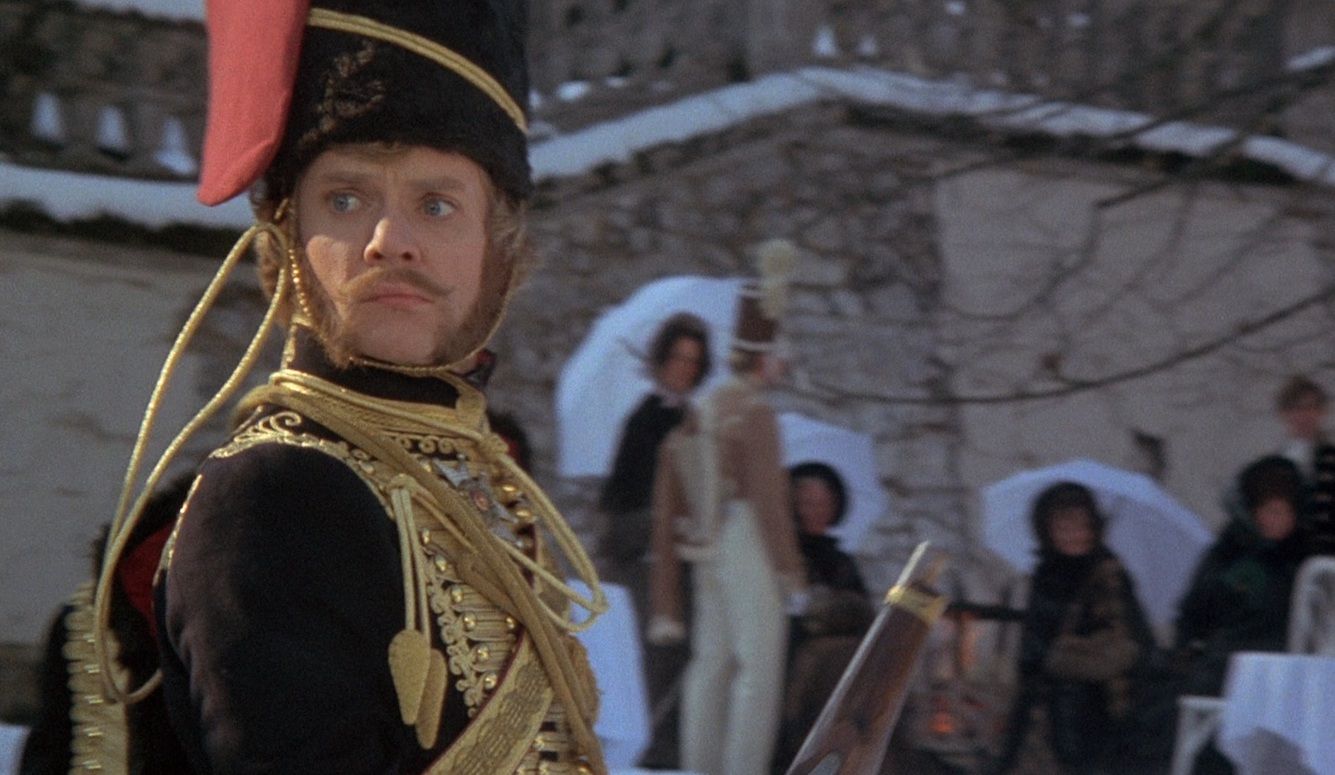
What Kipling would have thought of this is anyone’s guess. In the short story, he leaves much of what happens in Kafiristan to the reader’s imagination. We are told little about the inhabitants of the region and even less about the topography, except that it’s mountainous and snowy. The few details that we do get don’t always pass the smell test, such as the claim that the Kafiris, as descendants of Alexander’s army, have blonde hair and fair skin. Kipling doesn’t merely ask us to believe that Alexander was a Freemason (which is itself a stretch), he also asks us to believe that the Masonic rites and rituals have remained unaltered for more than two millennia, handed down in identical form in both England and Kafiristan.
The film, fortunately, doesn’t put such a strain on our common sense. Huston co-wrote the screenplay with his frequent collaborator Gladys Hill, and the pair dipped into actual history to fill in the gaps in Kipling’s story. In his Anabasis of Alexander, the Greek historian Arrian describes how Alexander conquered Kafiristan, offering to make his best climbers rich if they could scale the Sogdian Rock, the vertiginous butte on top of which King Oxyartes had built what he assumed was an impregnable fortress:
Thirty of them perished in the ascent; and as they fell into various parts of the snows, not even could their bodies be found for burial. The rest, however, reached the top of the mountain at the approach of dawn; and taking possession of it, they waved linen flags towards the camp of the Macedonians.
After that, Arrian explains, Oxyartes surrendered without a fight. Alexander now held the king’s family hostage, including his beloved daughter Roxanne, who was reputed to be “the most beautiful of all Asiatic women.” Alexander, Arrian writes, was immediately smitten by the princess: “No sooner did Alexander see [Roxanne] than he fell in love with her; but though he was in love with her, he refused to offer violence to her as a captive, and did not think it derogatory to his dignity to marry her.” How romantic!
In the Kipling story, we’re never told what Danny’s palace looks like, supposing he has one. Nor are we told the name of his would-be bride. She’s just a nameless Kafiri lass. Not so in the movie. Huston and Hill don’t just give Danny a palace but an entire holy city, sitting atop a high, tabletop bluff. The city itself is cunningly imagined, a palimpsest of Eastern and Western motifs, part mudbrick, part marble, with a crumbling acropolis at one end. Arrian doesn’t say whether Alexander built such a structure on the Sogdian Rock or on the nearby rock of Chorienes, which his men also scaled, but we do know that he built many like it in the East. As for Danny’s wife, clearly, only one name would serve—Roxanne—putting a bow on the Alexandrian theme and further convincing Danny that fate is guiding his hand.
III.
Anyone familiar with Huston’s oeuvre will know that Danny’s marriage spells trouble. The heroes in his films rarely get what they want. The prospectors in The Treasure of the Sierra Madre (1948) want to get rich but lose their gold dust in a sandstorm. The boxers in Fat City (1972) want to make it out of the sticks but only fight in small-time bouts, working crummy jobs on the side. The consul in Under the Volcano (1984) wants to reconcile with his wife but is so consumed by alcoholism that he only ends up pushing her away. Huston did happy endings, too, of course. Everything comes out all right for Charlie (Humphrey Bogart) and Rose (Katharine Hepburn) in the final reel of The African Queen (1951). They get married, sink the German warship they’re after, and swim happily away. But you can tell that Huston’s heart isn’t in it. The Germans simply vanish, leaving Charlie and Rose alone on the lake. “He got too bored to think up a good end,” Katharine Hepburn admitted. “It’s a wonderful picture, but the end is a bore.”
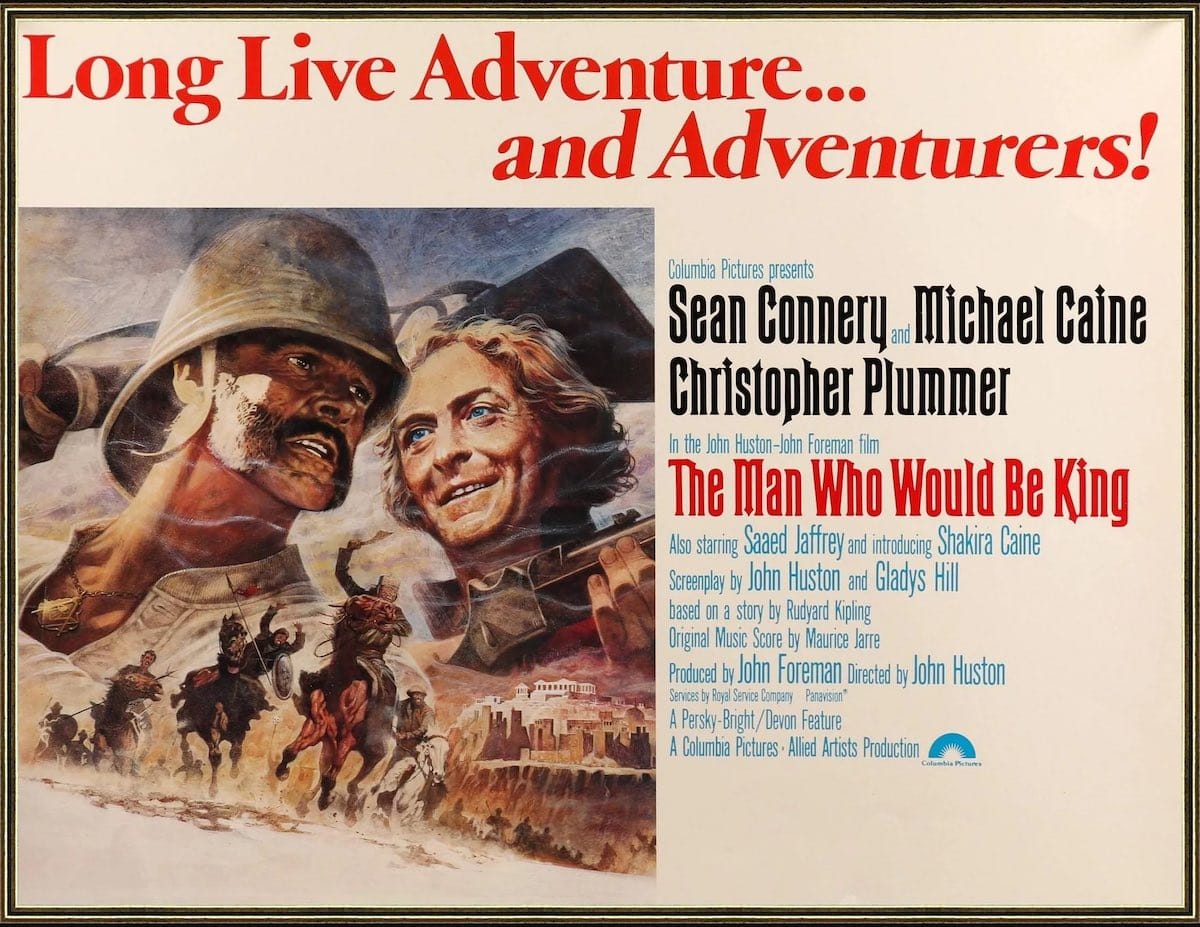
Huston himself could have been a character in a Kipling story. He was precisely the type of man that Kipling longed to be: an artist and a man of action. Before he became a film director, Huston was a boxer, a painter, a journalist, a short-story writer, an actor, a hobo, a screenwriter, and (briefly) a lieutenant in the Mexican army. Born in Missouri in 1906, he grew up, more or less, all over the place, bouncing from one town to another as his mother, a sports reporter, hopscotched between papers. “I never tired of traveling from town to town,” he later wrote of this period, and he remained a peripatetic creature all his life.
When he wasn’t making films, he was off hunting big game in Africa or chasing foxes in Ireland or smuggling pre-Columbian statuary out of Mexico. During the Second World War, he made combat documentaries for the Signal Corps. During the McCarthy era, he was one of the founders of the Committee for the First Amendment, which argued that no one should be blacklisted for their political beliefs. He was married five times and had five children, three his own, two adopted. Somehow, along the way, he made 36 feature films. Not all of them are masterpieces, as anyone who’s seen his 1982 musical Annie can attest. But many—The Treasure of the Sierra Madre, Key Largo (1948), The Asphalt Jungle (1950), The African Queen, The Night of the Iguana (1964), Reflections in a Golden Eye (1967), Fat City, Under the Volcano—are superb. His first movie, The Maltese Falcon (1941), may be the best film noir ever made, and his final movie, The Dead (1987), is perhaps the nearest that cinema has ever come to a perfect literary adaptation.
Huston had originally planned to bring the Kipling story to the screen in 1953, but Bogart and Gable both dithered. In 1955, he went to India to scout locations, only, once again, to have the project fall through. In 1963, he thought he might be able to make it with Richard Burton and Peter O’Toole, but his own schedule was too hectic to squeeze it in. Then, in 1972, while filming The Mackintosh Man in Ireland, he was given another chance. The producer of the film, John Foreman, began digging through Huston’s files and stumbled upon the script for The Man Who Would Be King. Witty and well-read, Foreman had taught English in college before joining MGM as an executive. He later became a Hollywood agent, signed Paul Newman, and, eventually, teamed up with the star to form Newman-Foreman Productions, which produced The Mackintosh Man. Foreman liked The Man Who Would Be King’s script, and by the end of 1974, he had scraped together US$5 million for the movie, pooling funds from Columbia Pictures, Allied Artists, and Canadian tax shelters.
Now, they needed to decide who would play the two leads. Foreman, naturally, thought Newman should play one of them. The other, he suggested, could be played by Robert Redford, who’d been paired with Newman in both Butch Cassidy and the Sundance Kid (1969) and The Sting (1973) to great success. Huston wasn’t thrilled with this idea and, fortunately, neither was Newman. “I think this is one of the best plays I have ever read,” Newman told the director. “But honestly, I don’t think it is for me. I reckon the two roles should be played by Englishmen. For Chrissakes, John, get Connery and Caine.” It was an inspired suggestion. Connery, at this point in his career, was desperate to escape from James Bond, whom he’d first played more than a decade before. He could hardly step into a restaurant without someone offering to serve him a vodka martini, shaken, not stirred. While he was in Japan making You Only Live Twice (1967), he was mobbed by so many Bond fans that he could barely leave his hotel. So he began seeking out very different parts: a coal miner in The Molly Maguires (1970), an emotionally unstable policeman in The Offence (1973), and a Moroccan bandit in The Wind and the Lion (1975).
Daniel Dravot, the character he plays in The Man Who Would Be King, wasn’t a complete departure for the actor. Like Bond, Danny is fond of strong drink, cool under fire, and has served in Her Majesty’s Armed Forces. But there the similarities end. Bond’s biggest flaw as a character is that he has no flaws. Brave, handsome, charming, athletic, intelligent, knowledgeable about everything from skiing to sailing to blending brandy, he’s more like a Greek god than a real man. Danny, by contrast, is all too human, and that’s the joke at the heart of the film. The man the Kafiris worship as a god is, in fact, a balding Briton with a foul mouth and an eye for attractive women. During filming, Connery eschewed his usual toupee and allowed the grey to show in his beard, making him appear even older than his 44 years. Danny is clearly less intelligent than Peachy, always a step behind when quick thinking is required. He makes up for it, though, by being more empathic, and trying, at least, to appreciate the Kafiris’ culture, which is something Peachy will never do.
Caine was an equally easy sell. He and his wife were vacationing in Paris when, one morning, a man with a deep, familiar-sounding voice rang his hotel room. “Is that Michael Caine?” the voice asked. Caine said it was. “This is John Huston,” the voice explained. “I am in the Hotel Prince de Galles next door to you. Could you come over and see me for a few minutes this morning?” Caine, who’d seen The Treasure of the Sierra Madre six times in six days when it first came out, raced over. He found Huston in the bar, a cigar in one hand and a glass of vodka in the other. With his craggy face and enormous grey beard, he looked, Caine thought, “like God after a bad night out.”
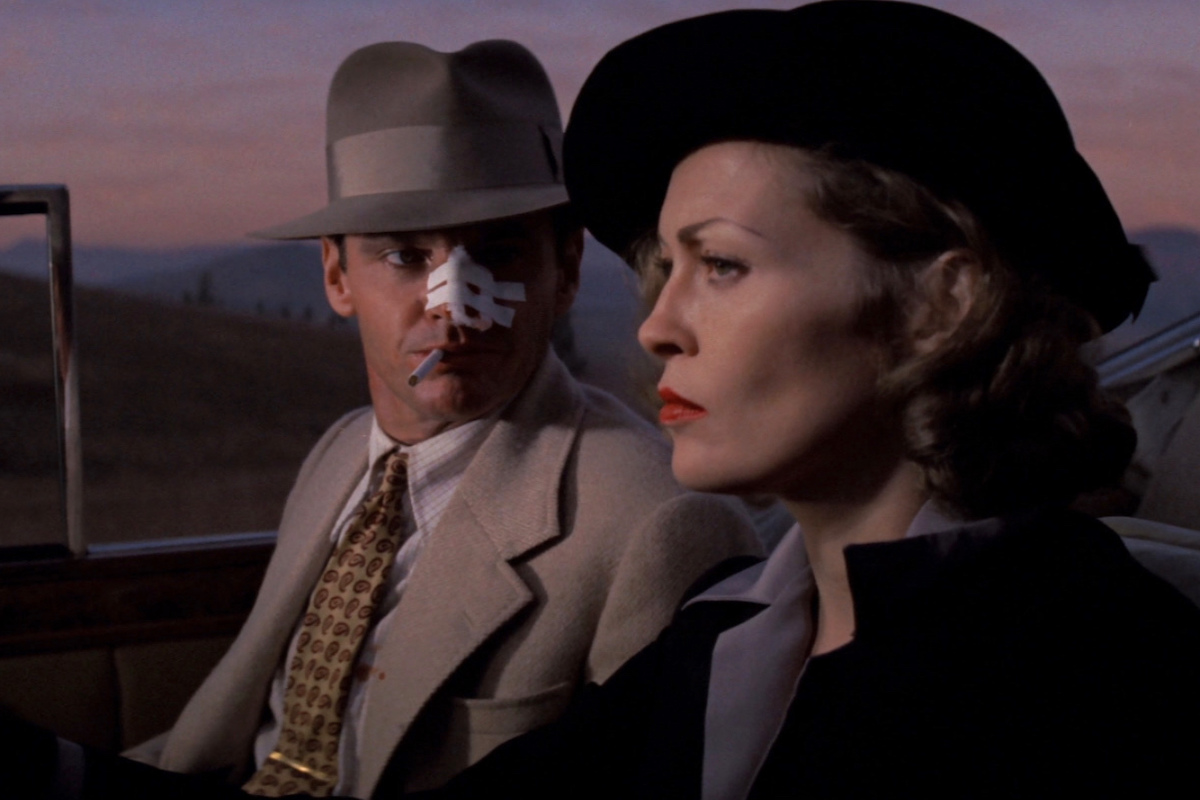
“What’ll you have?” Huston asked. It was a little early for a drink, Caine thought, but he decided that, since he was meeting a living legend, an allowance could be made. “A large vodka.” As Caine later recalled in his autobiography, “A broad smile with a hint of relief spread across [Huston’s] face. I had passed the first test.” The director then proceeded to tell him about the Kipling story, explaining how he’d spent years trying to raise the funds to make it into a movie and how he’d originally wanted Bogart and Gable to portray the leads. “We have now got the backing for the movie,” Huston concluded, “and I want you to play a character called Peachy Carnehan.” Instead of saying thank you, Caine blurted, “What part was Bogart going to play?” When Huston told him Bogart was supposed to have played the part of Peachy, Caine recalled, Huston “[knew] he’d got me.”
IV.
Principal photography began in January 1975, with Morocco doubling for India and Kafiristan. Afghanistan was too dangerous for the cast and crew to enter. Huston had scouted locations in India, Pakistan, and Turkey before deciding that North Africa was the best substitute, with the least amount of travel between locations. It was a hard shoot—the days were broiling and the nights were freezing. Caine came down with dysentery and a mild case of typhoid. During a scene on horseback, Connery was nearly emasculated when the stunt coordinator rigged a wire incorrectly around his leg. Huston developed a suspicious-looking growth on his elbow. Rather than halting the shoot and flying back to Europe for surgery, he had a local man lop off the nodule with a sharp knife, while he drank from a bottle of whiskey, the only available anaesthetic.
And yet, from an artistic standpoint, things proceeded marvellously. “Physically,” Caine said, “it was one of the hardest movies I ever had to make. But because of Sean Connery and John Huston, who were wonderful to work with, the whole thing was a very happy time.” One role that still needed to be filled when the company arrived in Morocco was the role of Roxanne, the gorgeous young maiden Danny tries to marry at the end of the film. Huston had originally cast Tessa Dahl, the daughter of actress Patricia Neal and author Roald Dahl, but decided at the last minute that she looked too European. A replacement needed to be found posthaste. Fortunately, Caine had brought along his wife, Shakira, a former model and Miss Guyana. Huston explained the problem to the cast the night before principal photography began. As Caine recalls in his autobiography:
Shakira was sitting there innocently eating her dinner when she must have felt the atmosphere change, because she suddenly looked up to find us all staring at her. She cottoned on immediately and said very firmly, “I am not going to play the part.”
Caine spent the rest of the night trying to change her mind, to no avail. The next day, though, he saw Huston take her aside during a break in shooting. When they returned a few minutes later, both of them were smiling. “The old charmer,” Caine said, had somehow convinced her.
Huston took a bigger gamble on the part of Kafu Selim, the Kafiri high priest. While Roxanne only has one line in the film, Kafu Selim has many. But the actors who’d tried out, Huston thought, looked too much like actors. They just didn’t seem like men who’d spent years in the mountain sun. Then, one day, an elderly Moroccan man strolled by the set carrying a shepherd’s crook. He was 103-year-old Karroom Ben Bouih, a local night watchman. “What a marvellous face!” Huston cried. “He’s Kafu Selim.” John Foreman was horrified. What if the old man died before they finished shooting his scenes? But Huston was adamant. Since Ben Bouih couldn’t speak English and had never acted before, Huston mimed the part for him before each scene. No one, however, thought to tell him that he’d been given time off from his regular job, guarding a nearby olive grove. It was only after he showed up to the set several days in a row looking fatigued that the truth came out and Huston explained to him that he no longer had to work at night.
Even when Caine and Connery were out of character, Huston continued referring to them as Peachy and Danny. On the second day of filming, Huston stopped Caine in the middle of a longish speech. “You can speak faster, Peachy,” he said. “He’s an honest man.” It was, Caine said, the perfect direction: “With that one sentence he had explained my character in a nutshell.” For the most part, though, Caine and Connery didn’t need direction. Watching them, Huston observed, “was like watching a polished vaudeville act—everything on cue, and perfect timing.” The great thing about both actors is that they play their roles straight, never letting on that there’s anything silly or pompous or outmoded about their behaviour. When they first arrive in Kafiristan, a local chief asks them if they’re gods. “Not gods,” Peachy replies, “Englishmen, which is the next best thing.”
V.
The picture opened in December 1975, earning US$11 million at the box office—a decent return on its investment but a pittance compared to the US$100 million that Jaws had raked in that summer. Connery and Caine eventually took Allied Artists to court for refusing to pay them the percentage points they’d been promised. Huston got stiffed, as well. A decade later, he still hadn’t been paid the money he was owed on the film. In a way, it was a fitting coda to the story, which ends, as so many of Huston’s pictures do, with the loss of a great fortune. The reviews, however, were glowing. “Everything works,” Dilys Powell exclaimed in the Sunday Times. John Simon called it “Huston’s best film in 23 years, or since The African Queen.” And the Nouvel Observateur opined, “Here’s a beautiful dream, finally realized ... a sumptuous meditation on power, which goes back to the time of English colonialism and ends with its fall.” At the New Yorker, Pauline Kael was slightly more circumspect, but even she confessed that she’d enjoyed it:
The story works only on the level of a yarn. But it’s a wonderful yarn. Huston shares with Kipling a reveling in the unexpected twists of behavior of other cultures, and he doesn’t convert the story into something humanistic. The ignorant natives are cruel and barbaric; if they’re given a chance, they don’t choose fair play. And Huston leaves it at that—he doesn’t pussyfoot around, trying to make them lovable. Huston has a fondness for the idiosyncrasies of the natives, and he doesn’t hate the heroes who go out to exploit them. Huston is cynical without a shade of contempt—that’s why the film is so likable.
It’s also why the film would be nearly impossible to remake today. In the studio era, Hollywood tended to romanticise Britain’s conquest of the East. Films like The Lives of a Bengal Lancer (1935), The Charge of the Light Brigade, and Gunga Din (1939) made empire-building seem glorious and good-hearted, bringing enlightenment to the dark corners of the earth. Subsequent events—Britain’s withdrawal from India, France’s expulsion from Indochina and North Africa, the overthrow of Mohammad Mosaddegh in Iran, the assassination of Patrice Lumumba in the Congo, and America’s long, woeful war in Vietnam—helped pull the plug on such films, as did the work of postcolonial scholars like Edward Said.
In his 1978 book Orientalism, Said argues that Western artists and intellectuals like Kipling not only whitewash Western colonialism but also whet the appetite of Western politicians, who learned to think of the Orient as an exotic pleasure garden, ripe for the picking. “The European representation of the Muslim, Ottoman, or Arab,” he writes, “was always a way of controlling the redoubtable Orient.” Orientalism didn’t appear on shelves until three years after The Man Who Would Be King was released, but many of its premises had already gained purchase by the time the picture went into production. In her review of the film, Kael wonders if perhaps the reason it had taken Huston so long to raise the money for the movie was that it didn’t treat the Kafiris more sympathetically, portraying them as noble savages, cruelly misused by the white interlopers.
Fortunately, that’s not how the film unfolds. Unlike so many well-meaning movies that have been made in the years since—Gandhi (1982), Cry Freedom (1987), Dances with Wolves (1990), and Amistad (1997), to name a few—The Man Who Would Be King doesn’t offer a tidy lesson about the wickedness of Western colonialism. It neither idealises the protagonists nor does it tear them down. It doesn’t portray the Kafiris as heartless heathens, but it doesn’t make them out to be innocent victims either. It pokes fun at everyone, including the poor man Peachy tosses off the train at the beginning of the picture; Ootah (Doghmi Larbi), the lily-livered chief of the Bashkai who dreams of being a despot; and Peachy and Danny themselves with their matching cream-coloured outfits and bizarre way of lighting their cigars.
And yet, as Kael pointed out, the film never patronises anyone. As cynical as Huston’s films are, they’re never misanthropic. Just the opposite: they positively delight in humanity’s profusion of wonderful characters, particularly the oddballs, rascals, and losers. There are no villains in The Man Who Would Be King, white or brown. It isn’t a film with an ideology or an agenda beyond being a wonderful story about human fallibility. And this is why, paradoxically, it still feels so trenchant fifty years after it was made. The jokes are still edgy. The action scenes still pack a punch. And the heroes are still as delightful as ever—not because they’re idealised creatures like James Bond or so many of the superheroes we see onscreen today, but because they aren’t.

